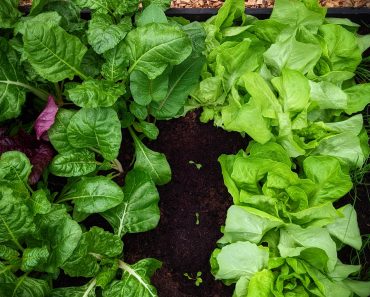Pretty Isn’t it? But don’t be fooled, if left unchecked Perennial Bindweed will use your plants as supports, creeping and wrapping around them, until it stunts their growth and inhibits their flowering. As lovely as it may look, it is always best to remove Bindweed from your garden…

This post may contain Affiliate links please see my disclosure policy
Bindweed Characteristics
Bindweed has long, strong, twining stems, adorned with large heart-shaped leaves, it flowers around June-October, producing large white trumpet-like flowers. It likes to scramble over hedges and shrubs of all sizes.
It can even climb fences, and it will, without difficulty, smother small ornamental trees in record time, if given the chance that is! In one season it can grow as much as 2 metres tall!
What is the problem with bindweed?
Bindweed can be a tricky devil! You may not even know you have it! For years Bindweed seeds may lay dormant in the soil, then tadaa! It shoots up as if from nowhere and run’s amok in your beautiful garden!
Calystegia sepium (bellbind or hedge bindweed) has an extensive system of rhizomes that grow deep into the soil. Unfortunately these rhizomes are mighty and are able to regenerate even after damage has occured. A new plant will grow from even the tiniest of fragments…which over the centuries, has made bindweed a worthy adversary to frustrated gardeners.
What does Bindweed do to your plants?
Nothing Good! Bindweed spreads very quickly underground, shooting out long white reaching stems that wrap and twine around anything they come into contact with. It will strangle and smother your plants, weakening them to the extent that it can halt fruiting, flowering and growth.
How Does Bindweed get into your Garden?
You’ve never had bindweed before? So why do you have it now? Like I said above, Bindweed is tricky!
Unfortunately, you may have unwittingly introduced it into your garden without realising it. Remember, Bindweed can produce from the tiniest root fragment. It can easily smuggle itself into your world via the roots of other plants, in soils and even in manures.
Is it Difficult to get rid of bindweed?
Honestly? Yes! Bindweed is not easy to remove as they persist from a perennial root system that can penetrate incredible distances!
The woody rhizomes sprout vigorously in spring and all those long underground white tentacles go on the hunt for plants to climb! But all is not lost…

Ways To get rid of Bindweed
You have a tough road ahead but with some stubborn determination you can eradicate Bindweed from your garden! Here are some options…
Affiliate links
- Dig up any seedlings as soon as they appear and remove as much of the root as possible. This will not eradicate the Bindweed straight away, but will , over several seasons weaken the plant and eventually eradicate it completely. But it will take time.
- Where it is not possible to dig up Bindweed roots. For example in heavily planted beds, simply remove stems as close to ground level as possible. This will weaken the plant and see much less growth
- Remove any Bindweed Roots as you come across them- Every piece of root left in the soil will undoubtedly grow into a new Bindweed plant, so remove as much as you can. Use a fork to avoid breaking up the root.
- There are chemical-free weed control methods, that will kill the growth above ground weaken the Bindweed but it wont kill the roots
- If Bindweed has grown through the root systems of your plants, dig them up during their dormant period , shake the soil loose and carefully remove Bindweed roots. Then replant.
- Exclude light- If you have a patch that is overun with Bindweed and you can hold of 12-18 months before planting. One way to get rid of Bindweed is by covering the ground with thick black weed membrane, even the strongest of weeds cannot grow without light!
In my garden I steer clear of any chemicals but if you are absolutely at your wits end, there is only one way to completely kill Bindweed. That is by using Glyphosate.
Glyphosate can be bought in gel, spray or concentrate form. This weedkiller kills everything it touches, so take great care! Apply glyphosate to the foliage only, from when Bindweed starts flowering in summer right through to early autumn. *** Glyphosate is thought to be linked to various human cancers and has been banned for municipal use by most local councils***
How to dispose of Bindweed after removal?
*Important -Never ever put bindweed roots on your compost heap, that is a sure way to spread Bindweed all over your Garden! Either burn the roots or send them to your local council’s green waste collection.
Here are some climbing plants that won’t hurt your garden!
- Clematis Montana
- Cobaea Scandens- The Cup and saucer Vine
- Scarlet Emperor Runner Beans
- Cucumber
- Neckargold beans
CREATING A GARDEN from scratch? TAKE A LOOK AT THESE FRUGAL DIY POSTS…
- DIY Potting Shelter
- DIY Potting Shed Made From Doors!
- Free Greenhouse Makeover!
- 10 ways to create a vertical Garden
- DIY Potting Bench From Scrap Materials
- How to Build a Bee hotel from Pallet wood
- How To Make A Rustic Fence with Tree Branches
- DIY Free Crazy paving Path
- How To make a garden arch with tree branches
LOOKING FOR MORE ‘HOMELY’ INSPO ?
Have a Nosey Around the Blog! See what i’ve been Baking, Growing and Brewing! Also, pop over and say Hi on Instagram







